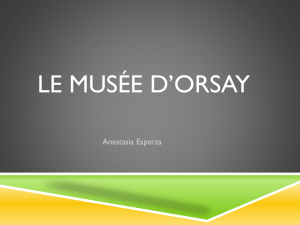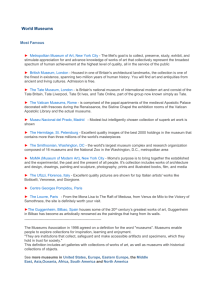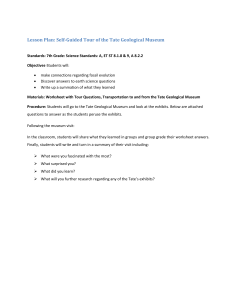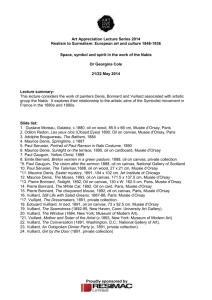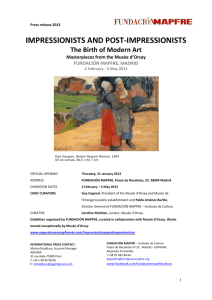Tate Modern - English2-2008
advertisement
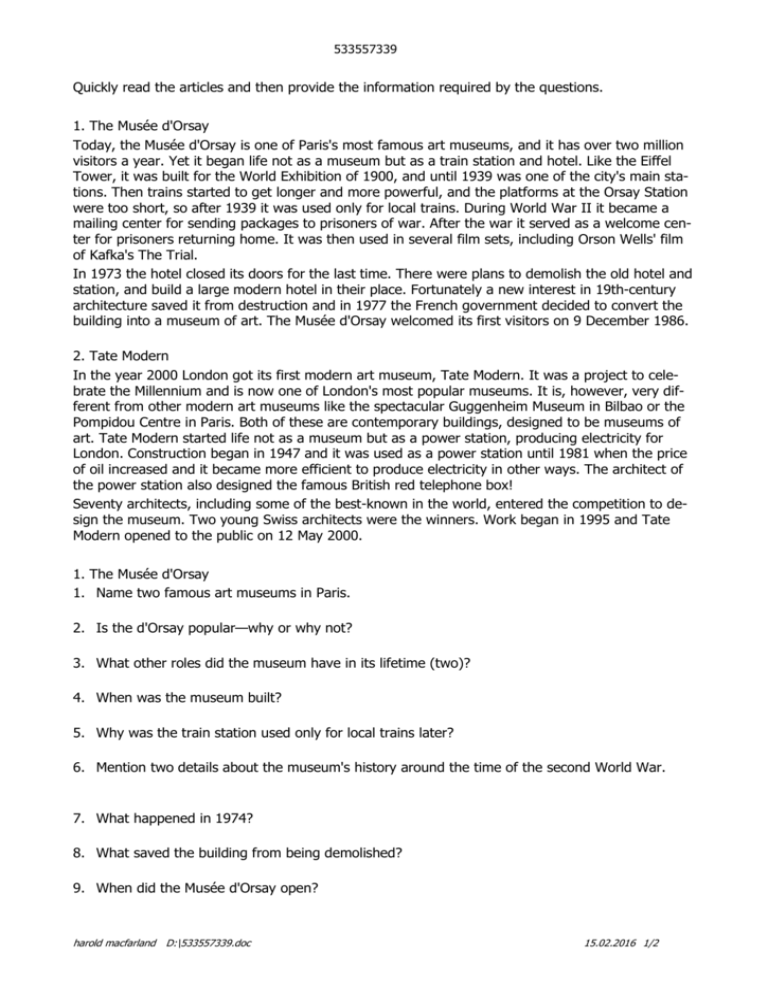
533557339 Quickly read the articles and then provide the information required by the questions. 1. The Musée d'Orsay Today, the Musée d'Orsay is one of Paris's most famous art museums, and it has over two million visitors a year. Yet it began life not as a museum but as a train station and hotel. Like the Eiffel Tower, it was built for the World Exhibition of 1900, and until 1939 was one of the city's main stations. Then trains started to get longer and more powerful, and the platforms at the Orsay Station were too short, so after 1939 it was used only for local trains. During World War II it became a mailing center for sending packages to prisoners of war. After the war it served as a welcome center for prisoners returning home. It was then used in several film sets, including Orson Wells' film of Kafka's The Trial. In 1973 the hotel closed its doors for the last time. There were plans to demolish the old hotel and station, and build a large modern hotel in their place. Fortunately a new interest in 19th-century architecture saved it from destruction and in 1977 the French government decided to convert the building into a museum of art. The Musée d'Orsay welcomed its first visitors on 9 December 1986. 2. Tate Modern In the year 2000 London got its first modern art museum, Tate Modern. It was a project to celebrate the Millennium and is now one of London's most popular museums. It is, however, very different from other modern art museums like the spectacular Guggenheim Museum in Bilbao or the Pompidou Centre in Paris. Both of these are contemporary buildings, designed to be museums of art. Tate Modern started life not as a museum but as a power station, producing electricity for London. Construction began in 1947 and it was used as a power station until 1981 when the price of oil increased and it became more efficient to produce electricity in other ways. The architect of the power station also designed the famous British red telephone box! Seventy architects, including some of the best-known in the world, entered the competition to design the museum. Two young Swiss architects were the winners. Work began in 1995 and Tate Modern opened to the public on 12 May 2000. 1. The Musée d'Orsay 1. Name two famous art museums in Paris. 2. Is the d'Orsay popular—why or why not? 3. What other roles did the museum have in its lifetime (two)? 4. When was the museum built? 5. Why was the train station used only for local trains later? 6. Mention two details about the museum's history around the time of the second World War. 7. What happened in 1974? 8. What saved the building from being demolished? 9. When did the Musée d'Orsay open? harold macfarland D:\533557339.doc 15.02.2016 1/2 533557339 2. Tate Modern 1. When did London finally show its cultural modernity? 2. Why was the project initiated? 3. Who initiated the project? a) John Major b) Margaret Thatcher c) Winston Churchill d) information NA (not available) 4. Name three other modern art museums. 5. What is different about the Tate Modern? 6. What else was the designer of the building famous for? 7. What is true? The number of architects entering the competition to redesign the Tate Modern was a) miniscule b) considerable c) tiny d) enormous e) unbelievably gigantic 8. The competition to redesign the museum was won by two a) Serbs b) Swedes c) Swahilis d) South Africans e) none of the afore-mentioned 9. When was the public able to visit the Tate Modern for the first time? harold macfarland D:\533557339.doc 15.02.2016 2/2
